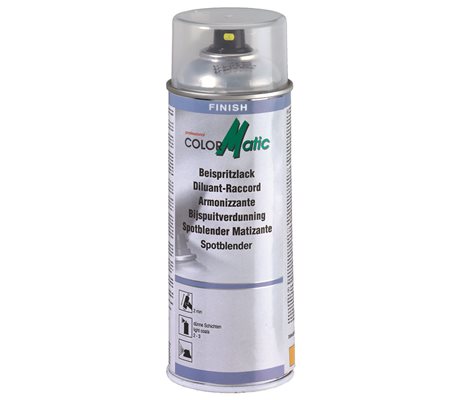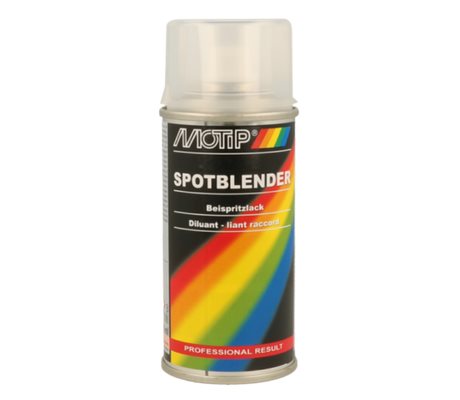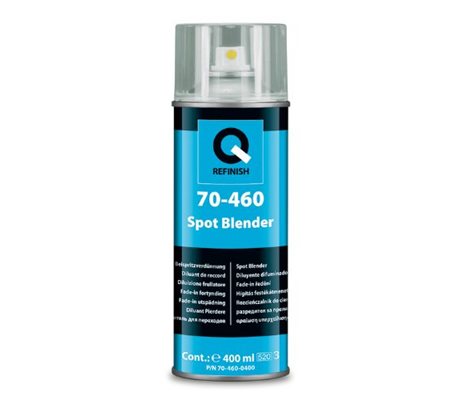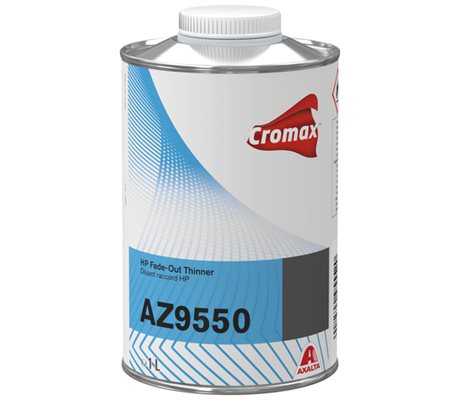Fade out thinner
When minor paint defects, scratches, stone chips or minor damage occur, fade out thinner can be used to "soften" and blend/blend the new paint with the surrounding surface to achieve a more invisible and natural transition.

Lechler L0EL0085L0,4
El085 Energy Spray Line Uhs Fade-Out-Blender
€28,53

Colormatic 50003-15
Colormatic Spot Blender
€15,92

Motip 00108
Spot Blender
€7,24
Create invisible transition in repairs
As a starting point, a spray thinner is designed to be compatible with different types of paint and varnish and can be used on different surfaces, including wood, metal, plastic and more. It is important to follow the manufacturer's instructions for proper dilution and application to achieve the desired result.
Spot blender, spray thinner or fade out thinner
Yes, spot blender and fade out thinner usually refer to the same product or concept in auto painting. Both spot blender and fade out thinner are used to create a soft and invisible transition between the repairing paintwork and the surrounding paintwork.
How do I apply a spray thinner?
The process of applying fade out thinner for spot repairs usually involves the following steps:
1. Preparation: Clean and degrease the area to be repaired carefully to ensure good adhesion of the new paint color.
2. Color Matching: Mix or match the right color for that vehicle using color cards, color codes or color knowledge.
3. Application: Apply the new paint color to the damaged area using a spray gun or touch-up micro brush. Gradual application and blending is key to achieving a natural fade out effect.
4. Fade out technique: Use the fade out thinner to soften and blend the color gradually against the existing paintwork. This step is the most critical and often requires experience. If you are into a do-it-yourself project, you can use youtube to see the technique done.
5. Polishing: After application and the actual fade out process, it may be necessary to carry out a fine polishing or polishing to achieve an even and smooth surface. This can possibly be done with sandpaper with a high grain size or wet sandpaper.
Note
It is important to follow the manufacturer's instructions for correct use and dilution of the fade out thinner, as this may vary depending on the product. Read and follow the instructions that you will find on the product's technical data sheet.













